True story: quite a few of my closest friends became my friends because they heard I do historical costuming and said “Oh, I’ve always dreamed of making X kind of dress.” And I said “Really? Well, I can help with that! Let me tempt you to the dark and full of handsewing side…”
And then 300 hours of pattern choosing and handsewing later we’re sending each other terrible memes at 3am, and crying on each others shoulder when things are hard.
I can’t promise you a costuming friend for life, but I can give you some of the tips that I give friends when they start on this journey. Hopefully they will help you achieve your costuming dreams.
First, choose what you want to make:
That’s pretty obvious! But it can be a bit overwhelming.
The three main strategies that people use to get started are:
- Pick an era, and make a complete outfit for that era, from the inside out.
- Pick a simple item that can be used for multiple eras, and start with that.
- Just make the pretty dress, and hope it fits once you make proper undergarments (or buy the undergarments, and make the dress).

Here are some tips for doing each of those:
1. Pick an era, and make a complete outfit for that era, from the inside out
This is the most commonly suggested method for getting started. Pick an era, identify the garments and layers for that era, find patterns for each garment, and get working.
That’s how my friend Nina got started two years ago. She settled on Regency, bought patterns for all the pieces, and worked her way through each garment following the pattern. Now she has a full, beautiful, Regency ensemble:
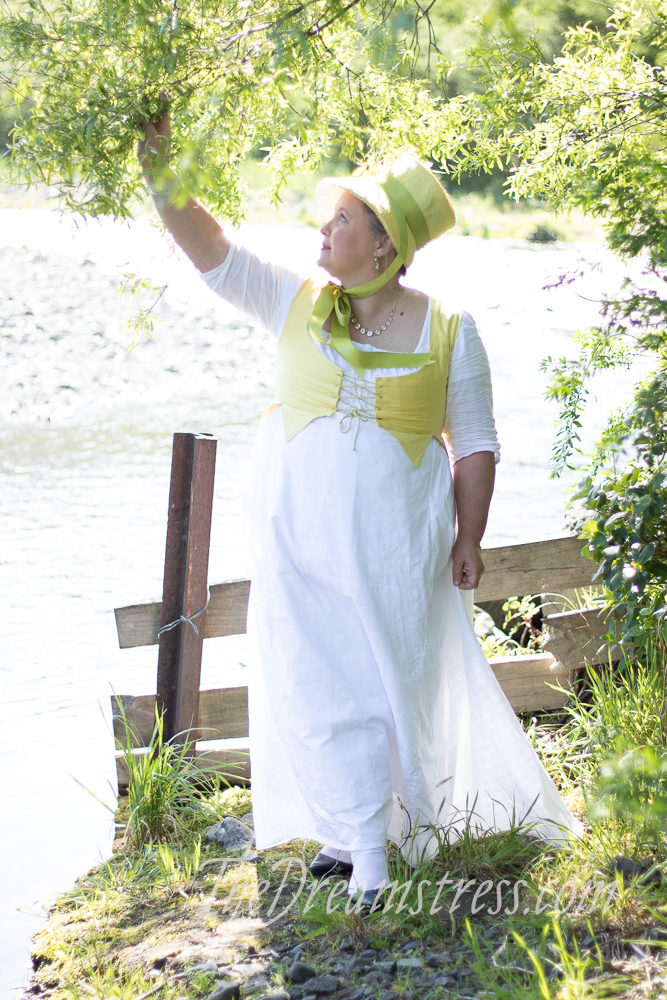
There are a few eras that are traditionally considered easy to start with, because there are lots of patterns for them, they don’t require a huge amount of supportive undergarments, and fitting is reasonably straightforward.
Some easy starter eras are:
Regency: for a start, you’d want a chemise, stays (corset), petticoat, and dress. From there you can add spencers for daywear, sleeveless spencers for balls, and make bonnets and other headwear. Burnley & Trowbridge had a great range of patterns, and suitable fabrics.
Late Victorian (1890s): a basic outfit can consist of a chemise, corset, petticoat, skirt (the Scroop Fantail Skirt can be used for both petticoat and skirt), and a blouse or bodice. Make an evening bodice and a jacket, add hats (for daywear) and accessories and you have three full outfit. Wearing History and Truly Victorian are a good place to start looking for patterns.
1910s: Obviously this one is a favourite of mine! I’ve done a whole series of blog posts on Building your own 1910s-WWI era wardrobe, with links to all sorts of patterns, including my Rilla Corset.
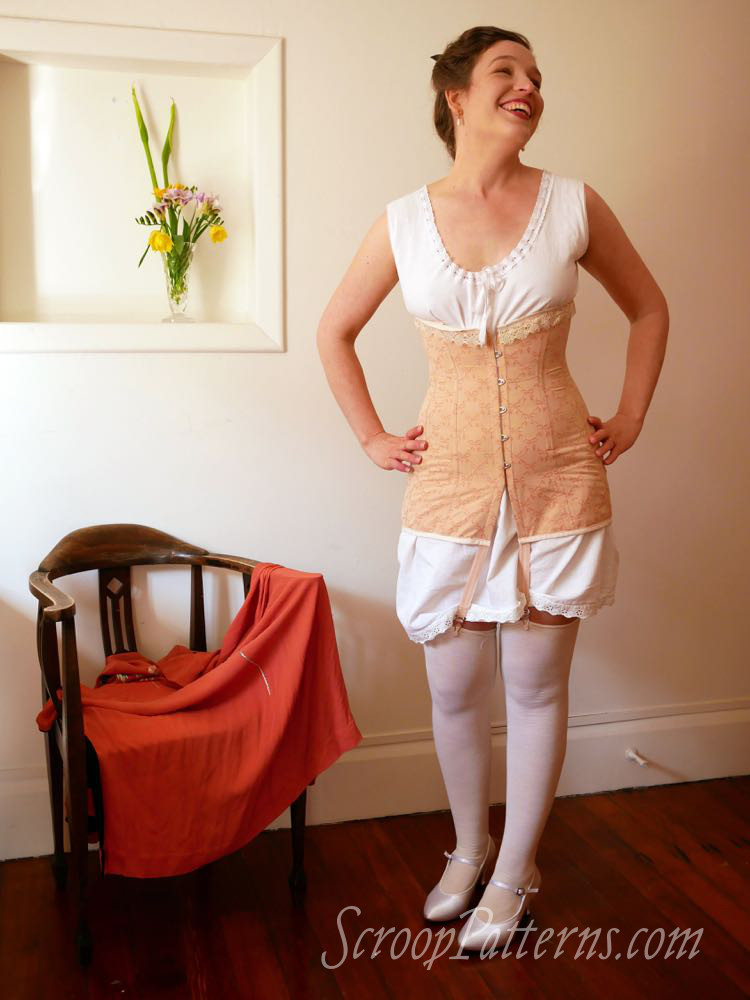
If you’re a little more ambitious, you could work on an era where there aren’t so many patterns:
Medieval (second half of the 14th c): This one is a little harder, because to really get a good fit, you have to drape it on yourself. And it’s really hard to make it look nice if it isn’t mostly handsewn. There are links to all the sources I used in my portfolio for my 1360s dress.
Of course, you don’t have to start with a simple era! If you want to dive right in and make 1660s (chemise, boned bodice, petticoat, skirt), or some other era without nearly as many resources, and that doesn’t scare you, go for it!
While you can go it alone, a piece of advice based on my own experience: It’s definitely easier to sew from existing patterns.
As long as it’s a good pattern to start with (ask other costumers and read reviews!), you get a much better result in a much faster timeframe, with less tears and frustration. The money you spend on a pattern is often saved in time and materials.
If planning a a whole outfit is too intimidating to contemplate, why don’t you…
2. Pick a simple item that can be used for multiple eras, and start with that
I just tempted my friend Jenni into joining our monthly historical costuming sewing day. She loves the idea of the costumes, but was a bit daunted by starting a whole outfit, and even a chemise seamed (heh heh) a bit much.
So I suggested a fichu: I use mine for 18th c, for Regency, and can even be a quick Medieval head covering:
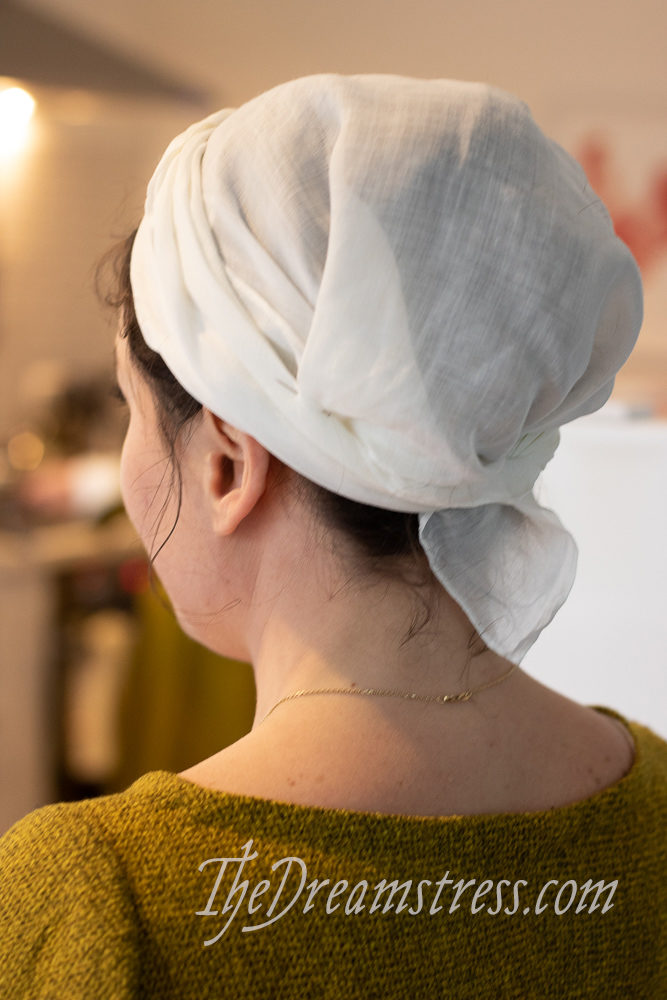
We cut out a linen triangle at 1:20, and by the time we packed up at 5, she’d hemmed both short hems, and half the long hem.
A day later she could say she’d finished the first piece of her historical wardrobe!

I’m recommending that she make a Regency shift next.
In a pinch you can wear a Regency shift under 18th c, Medieval, most decades of the 19th century, and up until the 1920s. Obviously it’s a cheat for most of those eras, but if you aren’t aiming to be a reenactor, it’s hard to beat a ca. 1805 shift for time-travelling versatility.
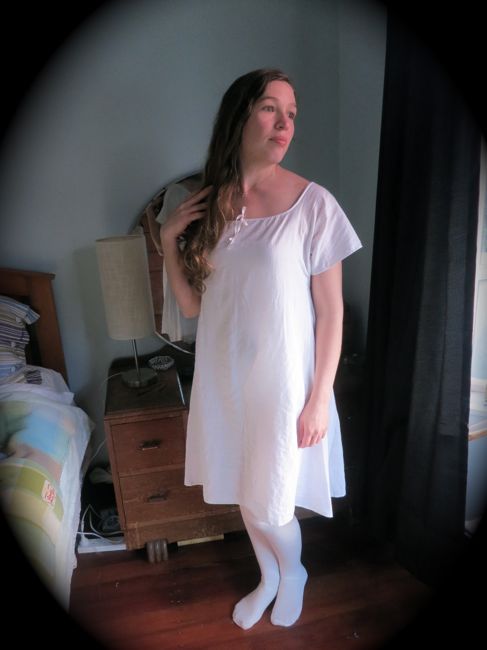
Picking a simple item lets you practice stitches, get the feel of construction, get the satisfaction of ‘making a thing’ without it taking weeks. Simple projects help you build build up a lot of the pieces that make an outfit look complete, but that a lot of costumers (cough cough, me) often neglect.
If all that sounds terribly boring, you can:
3. Throw caution to the winds and make the pretty dress to start with
It’s not the most recommended way of starting out, because dresses rarely fit right without the proper undergarments, but…
If chemises and corsets are really too uninspiring, and the thought just puts you right off costuming, it’s your life, and your time, and your sewing. Start with that pretty dress if that’s what makes you happy!
Medieval is very forgiving of dress-first, because it isn’t worn with any super-supportive/body shaping undergarments. You’ll probably end up wanting a shift to keep your outer fabric from getting sweaty/dirty, but you can get the fit right without one.
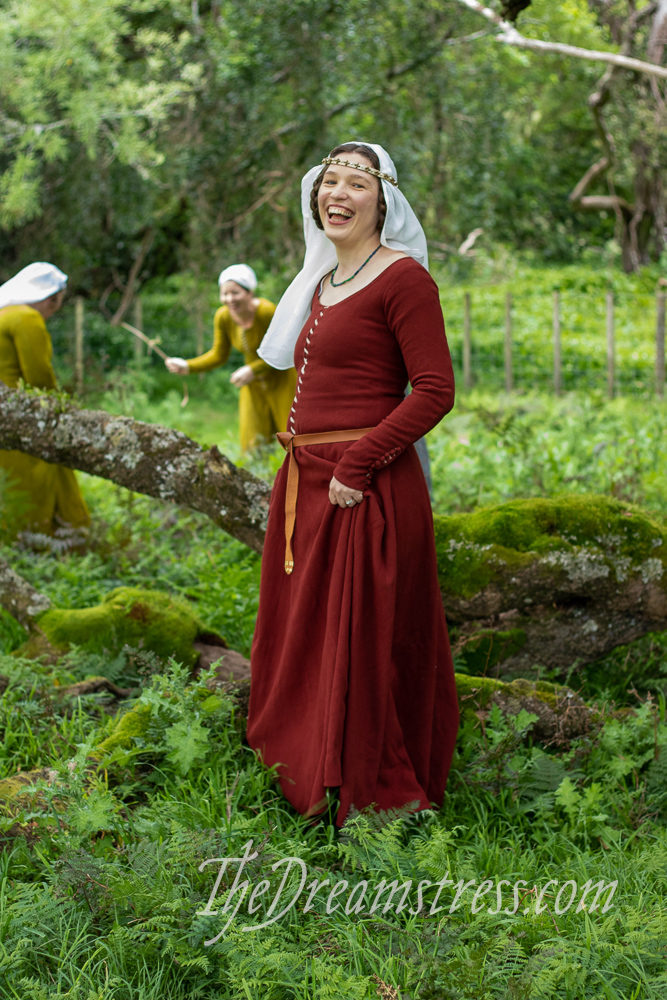
Regency and 1910s aren’t too bad for making your dress before your undergarments. I can wear almost all my Regency & 1910s makes without my stays/corsets underneath them. I’ll even confess to making two Regency dresses before I’d manage to make stays that I was happy with the fit and silhouette of.
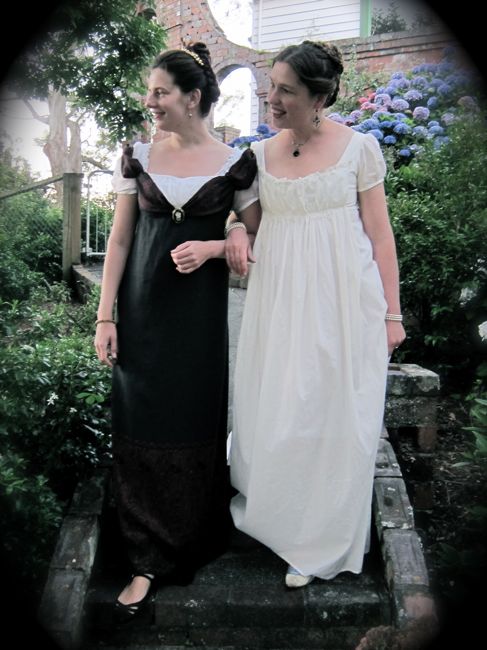
Both my Regency & 1910s certainly look better with the correct undergarments, and I’m going to be re-making the bodice of my 1810s Kashmiri dress to fit properly over stays (and also because my ribcage is getting bigger with age, sigh). But they are wearable, and look very pretty to the general public.
As long as they fulfil your costuming goals without stressing you too much, that’s what matters!
3v2 Make the Pretty Dress, but buy the boring/scary things
The less-risky alternative to sewing without the proper undergarments (if corsetry scares you), is to buy ones already made. There are a ton of makers out there, of varying quality and price range, who can create the bits you don’t want to make.
Redthreaded sells very beautifully made, reasonably priced corsets and stays that will give you the right historical silhouette. (and good, easy to follow, patterns using theatrical sewing techniques)
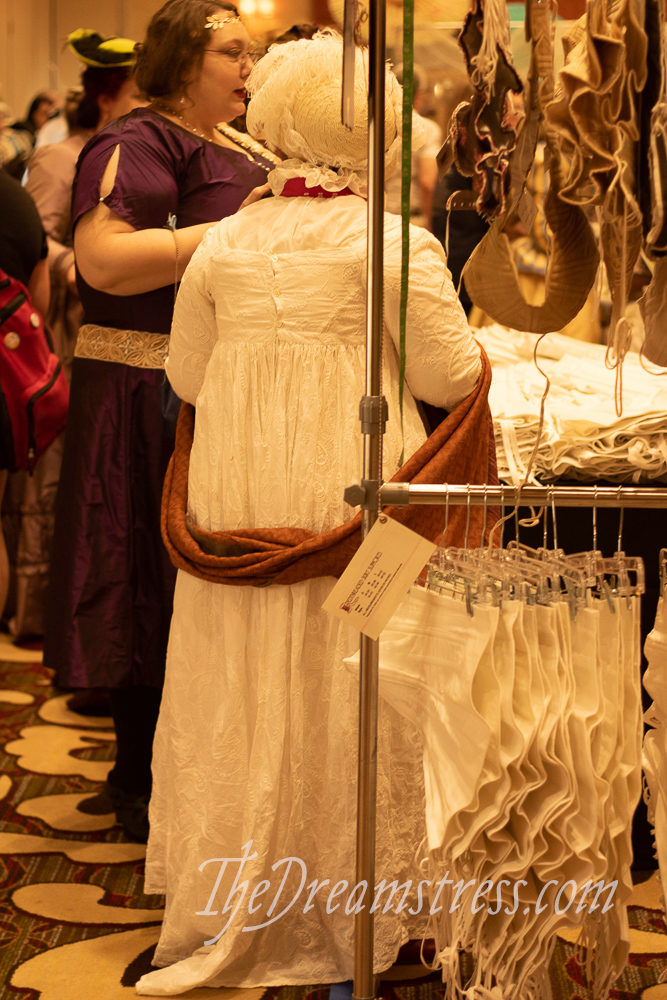
You’ve chosen what you want to do to get started. What next?
Costume diaries are your friend!
I made my first actually-attempting-to-be historical outfit 17 years ago, following Drea Leed’s classic ‘Constructing a 16th Century Flemish Outfit’, and Festive Attyre’s (sadly no longer live) amazing dress diary.

Whenever I start a new project, I often begin by browsing blogs, like Demode, The Fashionable Past (aka. Koshka the Cat), Modern Mantua Maker, and Katafalk and others (though more and more blogs are dormant these days – wailey wailey) just to see who else has made a thing, and what resources they used.
It’s very reassuring to see someone else make their way through a process, to know it’s possible!
But if you’re following a costume diary and a pattern, and are running into things that confuse you, or you’re still stuck on the ‘where to find patterns’ part, you should:
Join Facebook groups and other community discussions
The best way to get personalised help as you’re starting out is on a FB group or other community board, where there are a ton of people, and whoever is online, and has the time at that moment, will answer any question you ask.
A lot of people message me* through this blog asking for help getting started, or with a specific project, and I can’t always answer, either because I’m super busy at the time, or because it’s not an era I’m really expert in. And, if I forget to answer because a message comes when I’m super busy, I feel terrible. I want to make this hobby accessible, but can’t always manage to respond to everything. And every personal message I answer is time taken from public blog posts that could help lots of people. Sometimes I turn personal questions into posts, but that isn’t always possible.
I know a lot of the other more visible costumers feel equally torn between making the hobby accessible, helping one person or helping a lot of people, and taking care of themselves, their actual work, and their private life.
But if you join a FB group ( The Historical Sew Fortnightly; Elizabethan Costume; 18th Century Sewing; Georgian, Regency, Empire, Biedermeier Clothing Construction Support Group; 19th Century Sewing; Historical Pattern Reviews 1700-1929; or 1900-1925 Edwardian-WWI Era Fashion & Costuming, to name just a few of the dozens of groups out there), they are just full of people willing to help new costumers.
Ask a question, costumers all over the world see it, and answers pour in (usually, especially if you follow my tips below).
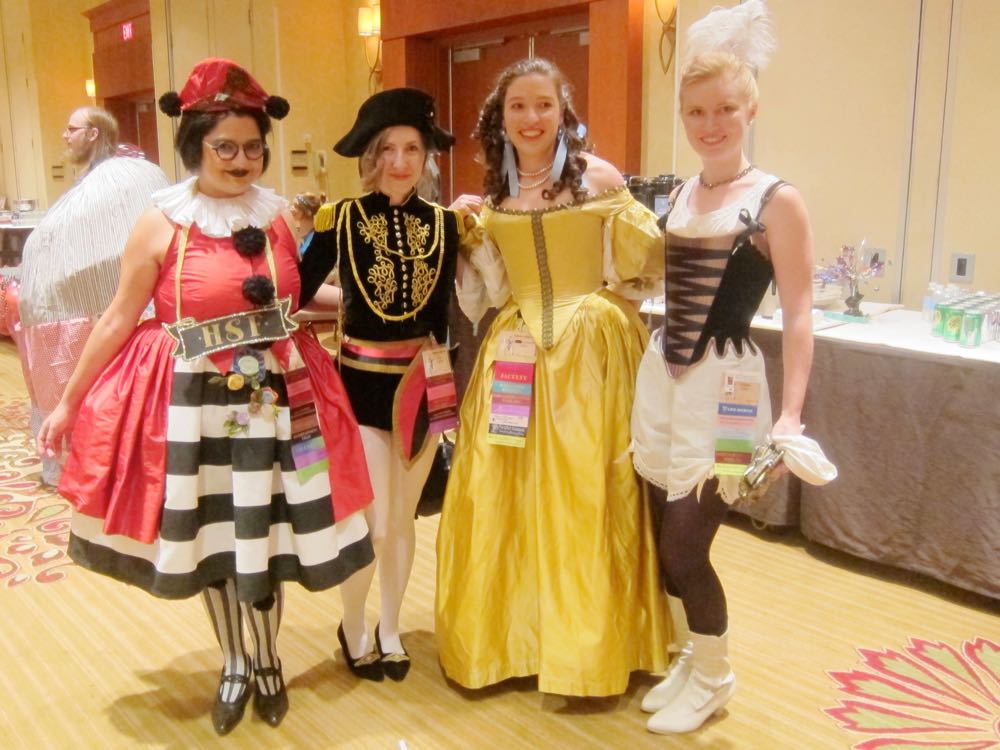
Matsukaze Workshops did a comprehensive list of historical costuming FB groups a few years back. There are even more groups now!
Not into FB? There’s /r/HistoricalCostuming if Reddit is more your thing.
Facebook groups and open messageboards can be frustrating, because you aren’t always sure how much the people answering know the era and craft (some people just really love to be helpful, and answer questions even if they don’t really know the answer…), but they are still pretty darn useful.
In addition to getting questions answered, you see what other people are making, get introduced to new terms, pattern companies, websites, and events.
There are a few things you can do to get better help in community groups:
Be polite and pay attention to the rules.
Every group and message board is its own little mini country, with its own laws and standards of politeness.
When you join a group, read the rules/Terms of Use.
Some group allow outside links, some don’t. Some groups are strictly “aim for as close as you can possibly get to exactly how it was made in the period” some are “whatever you want as long as it looks vaguely historical”. Respecting the guidelines of the group you’re in will make people much more likely to help you. Respect the era of the group (i.e. don’t ask for help with a 1750s Madame de Pompadour dress in the 19th c group…)
It’s often a good idea to lurk (or better yet, say hi and then stick to complementing people on their makes) in a new group for a few days or weeks, to get a feel for the group, and what’s ‘polite’ within that group.
When you do start asking questions, make sure you’ve done as much research as possible beforehand, and be as specific as possible in your question
People are usually delighted to help, but they aren’t mindreaders, and they aren’t google. Do some preliminary research (like this post!) and try to narrow down what you really want as much as possible.
Instead of asking:
“How do I make a historical dress”
(way too broad and vague)
or even
“How do I make a Victorian dress”
(because that still covers 63 years and a huge number of different styles)
Ask:
“Can you point me towards some resources for making an 1870s day dress” (Hooray, you’ve narrowed down your date range, and the kind of dress you want!)
or:
I’m just getting started, and working on a Regency wardrobe. I’ve found these 5x patterns for Regency stays/corsets. Which of the five would you recommend?
or
I really love the dress in this painting by Winterhalter. Can you help me identify the garments shown in the painting, and where to find patterns to make a similar look?”

Questions like those will help people give you the answers you need – and are more likely to attract accurate answers.
If you’re stuck on a specific sewing step, there are even groups for most of the main historical sewing pattern companies. So you can join them, and get clarification on how a pattern should fit, or what a particular step means. If you search the group, it’s entirely possible the question has already been answered!
The internet is awesome.
If all that is still confusing (especially it’s all-ness), you can:
Take a class or workshop!
These aren’t available everywhere, but you might be surprised at how much is available if you look around. My small (210,000) city has had a some form of workshop that would teach you to make a reasonable Victorian corset on average every other year in the last decade.
Being on the internet, and paying attention to groups, and seeing if you can find one for your area, will help you locate more classes. Obviously I’m not a huge fan of a lot of travelling due to its carbon footprint, but many classes are scheduled over the weekend to make it easy for people to travel & take them. Or, if you have friends who are interested, you might be able to get a teacher to come to you, instead of having to go to them.
If travelling or getting a teacher to come to you is not a possibility, there are some fantastic online tutorials, like Burnley & Trowbridges 18th century sewing YoutTube Sew-along Series.
And in an absolute pinch, a good standard sewing teacher will be able to help you interpret and fit a good historical pattern.
Hooray! You’ve made an outfit, now what?
Now you need an event to wear it to! And that’s the topic of my next post…
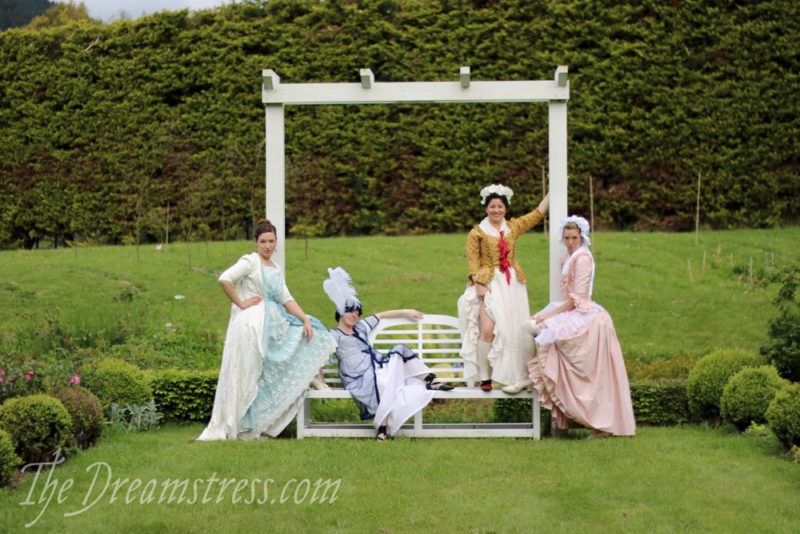
*I’m just going to put this out there. I hate it when people message me on Instagram for information, because typing complicated answers on a phone is not fun, nor is hunting up a lot of links. I don’t want to ignore anyone, but IG is not great for answering anything but the most cursory questions. 🙁

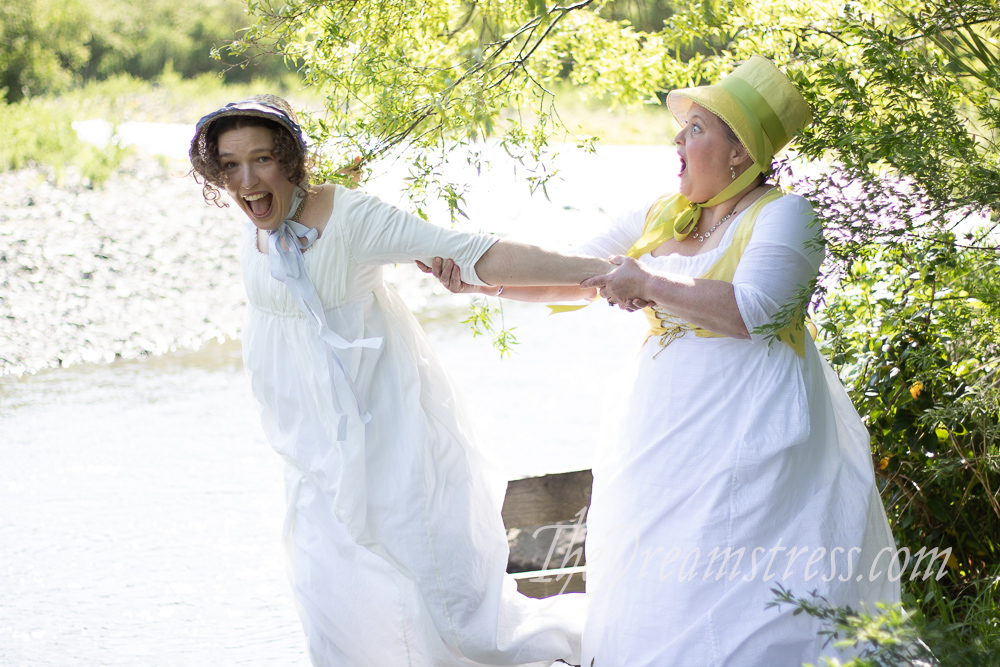
A really timely post, thank you. Now that I’ve finished my studies I’m planning to get back into historical costuming (and the Historical Sew Monthly) next year, but want to do so in a more orderly way than the rather random collection of things I’ve made in the past. This post is so full of useful information to get me started. And I totally agree with you about the demise of so many blogs – pretty pictures on Instagram are pretty, but sometimes I just want a long detailed post, or posts, on ‘How I made a thing’.
Full disclaimer: I am a lurker here. I check in every week or so and am still amazed a fellow Kiwi does historical dressmaking (internet seems to be somewhat American-heavy and we hate our shipping fees!). I am still hesitant about jumping in feet first because budget constraints and those pesky “events” to wear and justify such things to so I eagerly await your next post!
PS: you’re an amazing inspiration, Leimomi! Even if we all feel a bit overwhelmed sometimes, there’s usually someone(s) to help.
I’ve chosen a middle way; I bought a corset, but have decided to dive right in to making an 1860s ballgown. I consider myself fortunate that a good friend suggested the specific pattern I’m using, so I can text her to say things like “help how does one sleeve”. I don’t know how much costuming I’m going to do beyond this gown. I do want to make a Regency ballgown for an event that happens every year near where I live, but I again can text this same friend for moral support.
Confession time: I don’t think I have the discipline to make a full historical outfit to wear to a special event, as much fun as such an event would be. I am much more likely to make a handful of garments in varying degrees of historicality, and wear them all in a happy mish-mash, as my everyday clothes.
But I need to be a lot more disciplined about a) finishing existing projects and b) deciding on garments and making them. There are so many I want to make! A sultana/wrapper or two (like the ones you made for Lynne), Eastbourne trousers, a skirt with slits at sides for pockets (one of those ones like old petticoats with front and back on separate waistbands), a knitted capelet…
There never seems to be enough time and energy for all the things I’d like to do (sew! knit! garden! write!), but that’s life, I suppose. “All we have to decide is what to do with the time [and energy] that is given us.”
Thank you so much for offering the 3rd version. It drives me up the wall when everyone on FB acts like the sky WILL fall if you make a dress before the corset.
If I had had to make all the undergarments first I would have been burnt out before even getting started. And you know what? My dress only needed a *little* fitting once the corset was made.
Once you have an ensemble or two under your belt (whether skin-out or only one or two proper undergarments) giving an era your full attention seems significantly less daunting because now you have SOMETHING to wear to that event that you wanted to attend, rather than nothing at all because you were pressured to do it skin-out and got stuck on the corset.
Thanks! 🙂 I’ve seen people start historical costuming in all sorts of ways, so thought it was important to cover the range. And there are experienced costumers who make lots of incredibly beautiful outfits, but buy all their corsets from Redthreaded or other makers. (and fabulous costumers who make the corsets and then never get around to the outer garments…).
It’s definitely easier to get a good fit over a corset, but whatever way works for you is what’s important.
I agree. I’m thinking of attending an 18th century garden party in the spring. I bought two patterns-one a robe d’anglaise and one robe a la francaise. One came with a pattern for the panniers the other didn’t. Certainly need to make that, however I think I’ll wear Spanx or some other shape wear for the 2 hour party instead of making stays at this time. Perhaps for next year I’ll have made the stays/corset. However the robe d’anglaise pattern asks for a zipper which is so inaccurate. Again, it’s for a 2 hour event. Should I choose to make that one I will use an invisible zipper and hide the tab somehow. Lol!
I went with number 3 (sort of) for my first historical dress. I jumped right in the deep end with Elizabethan and made the farthingale and then the skirt and bodice. However, the idea of a corset scared me so I bought and altered one – after I’d made everything else! Not the way I’d recommend doing it but fortunately for my future costuming it worked out fine. I still enjoy Elizabethan costuming 15 or so years later and I’ve made many corsets of different eras since! (They’re not so scary after all!)
Whereas I went the opposite way with Elizabethan – made the farthingale, stays and ruff, and then never really completed the dress. I just can’t get excited about it!
But yeah, corsets aren’t so scary <3
I’m a teenager who really wants to get into historical sewing and this was really helpful! Thank you 🙂
You’re welcome! Happy sewing!
Thank you so much for writing this! I’ve been lurking here for years, enjoying all the pretty things, but I’ve never really known how to get started. Super awesome resources!
You’re so welcome! I hope it helps you in your costuming journey!
I’d like to inform that national library of France just digitalized “le Petit Echo de la Mode”, you can find it here : https://gallica.bnf.fr/ark:/12148/cb328362370/date.r=petit%20echo%20de%20la%20mode?lang=EN
Ooh, thank you!
thank you for this fun and detailed post; I’ve been following the links all week and am pretty well decided that I will try my hand at something historical (I’ve been sewing regular clothes for a long time but have always had a love for the past). Your posts are all so inspiring, but I think you have outdone yourself with this one 🙂
I am interested in making and just looking at costumes from the English Civil War era. But I seem to be almost the only one on the internet.
The re-enactment sites are full of male costumes. uniforms and armour but there is almost nothing about the ladies.